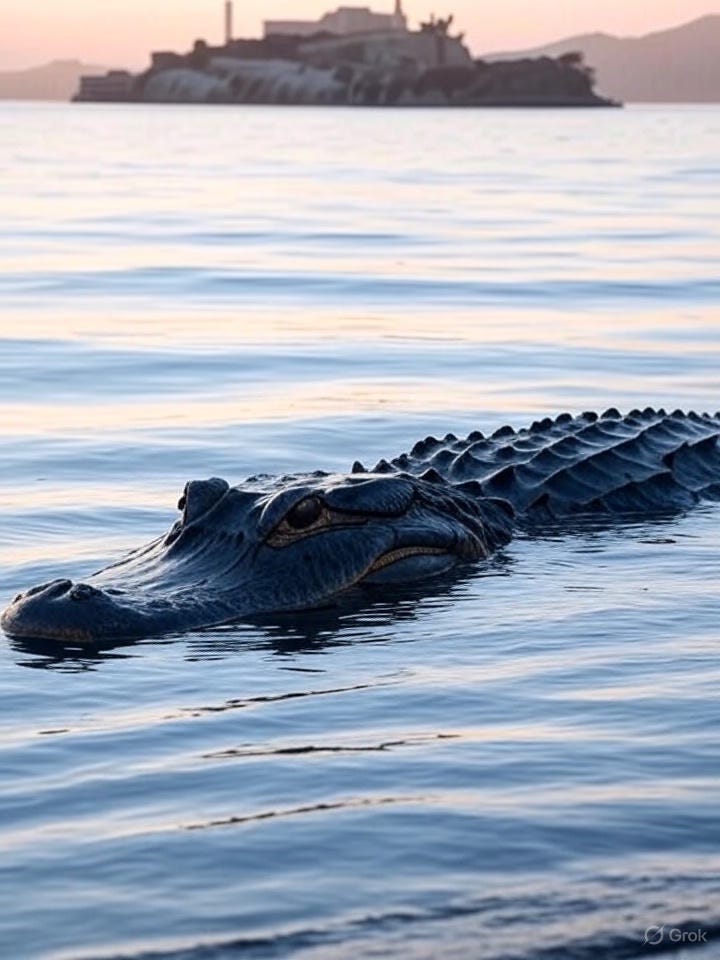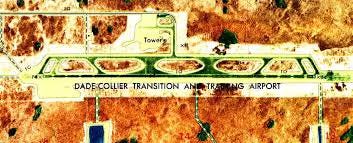Dade Collier Jetport, the new "Alligator Alcatraz"
The Rise and Fall of Dade-Collier: From Jetport Dream to Alligator Alcatraz
🚀 The Jetport Vision: A Supersonic Dream
In the heady days of the late 1960s, Florida boldly imagined itself as the future gateway for supersonic air travel. The Everglades Jetport, envisioned as the world's largest airport, was a testament to this grand vision. Planners promised six enormous runways, ultramodern terminals, and a futuristic monorail linking directly to downtown Miami, catering specifically to anticipated aircraft like the supersonic Boeing 2707. Classic photographs from 1968 capture an ambitious and optimistic scene: construction crews hard at work laying down miles of asphalt amidst the vast, untouched wetlands of the Everglades, with cranes silhouetted against an endless horizon.
🌱 Environmental Uprising: Protecting a National Treasure
Almost immediately, the Jetport faced fierce opposition from environmental groups alarmed by the threat to the fragile Everglades ecosystem. The pivotal 1969 Leopold Report starkly warned that the proposed development would devastate critical wetlands crucial for wildlife habitats and essential water purification. Historic images from environmental protests showcase activists holding signs demanding 'Save Our Swamp!' and 'Protect the Everglades!' Due to mounting public pressure, only one runway was completed before construction halted permanently in 1970. The project became a striking symbol of the clash between unchecked ambition and environmental conservation. Ultimately, the area around the Jetport was preserved as part of the Big Cypress National Preserve, protecting wildlife and ecosystems from further destruction.
✈️ Reinvention as a Training Airfield: A Second Chance
Although the commercial airline dream was scrapped, the isolated runway found new purpose as a pilot training center. Airlines like Eastern Airlines and Pan Am, along with the U.S. Coast Guard and military branches, saw the airfield’s isolation as ideal for practicing low-traffic instrument approaches and emergency procedures. Classic photos from the 1980s depict various aircraft landing on the isolated runway, pilots practicing precision maneuvers against a backdrop of endless marshlands. In the 1990s, infrastructure investments maintained the airfield's viability, though advancements in flight simulation technology steadily reduced the need for real-world training grounds.
📉 A Ghost Runway in the Swamp: Lost in Time
By the early 2000s, Dade-Collier had become a forgotten relic of aviation history. Satellite images of the runway—now eerily devoid of activity—sparked curiosity among aviation enthusiasts and nature explorers alike. With no terminal, control tower, or aircraft in sight, the runway was a stark reminder of abandoned ambitions overtaken by the wilderness. Recent aerial imagery reveals nature gradually reclaiming the runway, a poignant metaphor for Florida's enduring struggle to balance development with ecological preservation.
🐊 Alligator Alcatraz: A Modern Controversy
In a dramatic twist in June 2025, Florida Governor Ron DeSantis, invoking emergency immigration powers, transformed the forgotten runway into an immigrant detention facility dubbed 'Alligator Alcatraz.' The remote site's natural surroundings—vast stretches of inhospitable wetlands teeming with alligators and snakes—acted as a formidable barrier, echoing the isolation of the infamous Alcatraz prison. Within weeks, the site transformed into a stark encampment, housing 5,000 detainees behind razor wire and guard towers, guarded by the National Guard and private contractors. Surreal photos circulated widely, showing stark, hastily erected structures atop the vast runway, dramatically juxtaposed against the lush Everglades.
⚖️ Human Rights and Ecological Backlash
Almost immediately, Alligator Alcatraz became a flashpoint for controversy. Human rights groups reported severe conditions—lack of clean water, unbearable heat, rampant insect infestations, and insufficient medical care. Civil rights advocates and faith leaders, including Miami's Archbishop, condemned the facility as morally reprehensible. Indigenous communities protested vigorously, citing the desecration of sacred lands. Images captured emotional moments: prayer circles led by tribal leaders, environmentalists linking arms in solidarity, and legal teams announcing swift legal action on courthouse steps.
🌍 Symbolism and the Uncertain Future
Today, Dade-Collier stands as a complex symbol of conflicting values—ambition, conservation, political expedience, and human rights. Federal lawsuits challenge the legality and morality of Alligator Alcatraz, hoping to return the land to conservation status. The story of Dade-Collier, captured vividly in historical and modern images, resonates as a poignant reminder of the consequences of unchecked ambition. It symbolizes Florida's perpetual challenge to balance economic and developmental aspirations with the urgent need to protect fragile ecosystems and uphold fundamental human rights. The site's future remains uncertain, but its past clearly illustrates the high stakes involved when humanity confronts nature—and itself—in the pursuit of progress.


